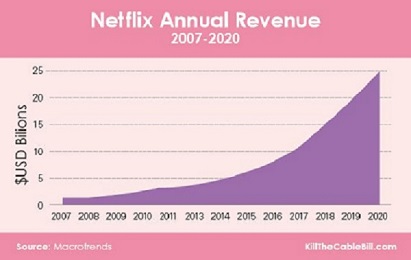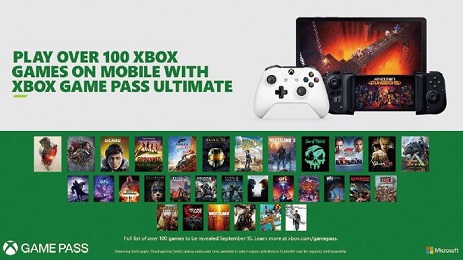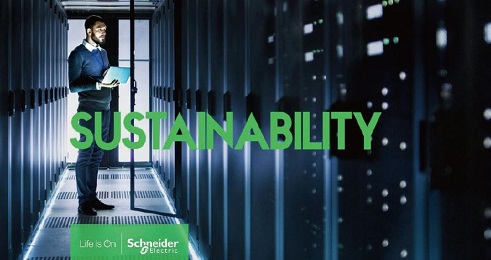A regulation to prevent consumer damages in subscription services will be enforced this month. Thus, it will be mandatory for subscription-based services to inform consumers in advance when turning to a fee-charge service. Recently, the subscription economy has been spreading rapidly throughout our society. Therefore, the Sungkyun Times (SKT) will now introduce the concept of the subscription economy, its trends in industrial fields, and its following influences.
What Is the Subscription Economy?
The Concept of the Subscription Economy
Subscription economy refers to an economic environment where customers pay regular fees to use goods or services. Unlike traditional economies where customers get ownership after making a purchase, a subscription economy gives the customer membership, which can lead to continuous consumption. It is also different from a sharing economy in that in a sharing economy, the owner provides services to customers via a platform while the supplier provides services to customers in the subscription economy. There are three types of subscription business models. First, the membership model is a business model where customers pay a subscription fee and use unlimited services. As customers do not need to buy respective products, they can save money. In the rental model, customers pay a subscription fee to rent and use the goods. Customers can utilize the goods without paying a lump sum. Lastly, the delivery model is the type where customers get regular deliveries as they pay a subscription fee. Since the buying procedure is simplified, customers can make purchases more conveniently.
Background of Growing Subscription Economy
There are two major reasons for the subscription economy’s growth: the transition in the consumption trend and the development of Information and Communications Technology (ICT). Millennials are very familiar with digital devices and they tend to value their experiences. They prefer subscription business models because they can experience more options with efficient cost. Also, digitalization was accelerated by the outbreak of coronavirus disease 2019 (COVID-19). Online markets became vitalized as people stayed longer hours at home and made more online purchases. In addition, people consume digital contents more than before, so the media contents industry represented by Netflix grew rapidly. For example, Netflix had an annual turnover of $15.7 billion in 2018, and its sales rose to $25 billion in 2020. As Netflix achieved great success and advanced ICT made it easier to adopt subscription models, the subscription economy started to spread to other industries.

Subscription Economy in Various Industrial Fields
Gaming Industry
As many game companies have recently launched cloud streaming game services, the subscription economy started to grow in the gaming industry. Through cloud gaming, users can enjoy games through online streaming. There are several types of cloud gaming services combined with subscription models, including subscribing bundles of games or game company memberships. So far, users needed high-performance gaming computers or consoles; however, they can now enjoy games even on TV or with their mobile devices. Also, game users can play different games at a low cost and get benefits like discounts on game items. For the suppliers, cloud gaming helps gain more customers with fewer restraints and broadened choices. Suppliers have less pressure for launching a new game on cloud gaming because it has less risk of failure than launching an individual game. Along with this, the revenue of subscription mobile games is increasing. According to the Google Play store, subscription-styled game apps have grown by 70% in 2020 compared to 2019. Despite this surge, there is not yet distinct growth in the overall game industry. However, companies are jumping into the subscription-based cloud gaming market such as Microsoft’s Xbox Game Pass, and it is expected that the subscription economy in the gaming market will grow continuously.

Retail and Consumer Products Industry
In the retail and consumer products industry, the subscription economy usually appears as regular delivery services based on mobile. Suppliers can provide direct services through this D2C (Direct-to-Customer) model, and customer satisfaction also increases. By using the service, customers can save time on buying the same products every time and make orders simpler. Companies can save sales costs since the sales take place on the internet, and consequently, customers can buy at a lower price. Also, the subscription model in this area offers personalized recommendations based on data, using Artificial Intelligence (AI) or D&A (Data & Analytics). For instance, Purple Dog, a wine start-up, provides a monthly wine subscription service that delivers wine regularly after its AI analyzes customer’s preferences of wine taste. The revenue of Purple Dog in July 2018 was 3 million won, but its monthly revenue rose to 200 million in 2021. It also has a high subscription retention rate of 94%. As start-ups can easily gather loyal customers, and large companies can collect more data from their customers, the subscription economy in the retail and consumer products industry is growing rapidly.

Mobility Industry
The subscription economy in the mobility industry exists in vehicles, car batteries, and other vehicle options. Customers prefer these subscriptions because the initial cost is minimized. Traditionally, people had to pay lots of money at once to buy cars; they can now use cars at affordable prices. Also, using their smartphones, customers can easily subscribe to cars whenever they want to while they had to visit a dealership before. When compared to a rental or lease service, it is more attractive to customers: it has no termination cost, no extra fee for changing cars, and it even includes delivery service. Car companies also prefer subscription services because they can directly offer their cars to customers unlike the car sharing service. Hyundai Selection, the car subscription service of Hyundai motor company, has over 10,000 subscribers, and its subscription rate maintains 97%. Premium vehicle brands like Porsche and Mercedes-Benz are also offering vehicle subscription services, and Tesla provides a subscription service for driver assistance software. Like this, the subscription model in the mobility industry is growing, and its target is also enlarging.

Changes Followed by Transition to the Subscription Era
Changed Perceptions in the Concept of Consumption and Overall Awareness
As the subscription economy comes into our lives, customers’ perceptions of consumption have changed. Before, customers equated consumption with owning; however, having subscription models, they came to value the experience and the freedom of choice. With this change, the importance of copyright also increased. In the past, illegal downloading of movies and music prevailed as people thought they could enjoy content only when owning them. However, with the subscription economy growing, it has become more natural to subscribe to content rather than to own it, and the awareness of protecting copyright rises. To keep up with changed perceptions, businesses also transformed from focusing on one-time sales to providing constant services. It is expected that the market will become a more customer-friendly market where customers can experience ongoing services.
Prepare for Environmental Issues
Though the subscription economy brings convenience to our lives, caution should be taken since the subscription economy can result in environmental problems. In particular, regular delivery services can cause more disposable products during packing and delivery. Also, it increases the amount of trash as the procedure is periodical. For example, when subscribing to a salad delivery service, it creates trash every day such as plastic containers and boxes. Moreover, recently, data centers of digital streaming companies such as Netflix are being blamed for global warming. A data center is a business infrastructure where a company’s computing system and storage are located. Thousands of computer servers in a data center need lots of electricity to be operated, which generates carbon emissions, and in turn contributes to the greenhouse effect. According to International Data Corporation, the amount of carbon emissions by data centers worldwide increased from 76 million tons in 2002 to 259 million tons in 2020. It is expected that the amount of carbon emissions caused by using the internet will rise as the subscription economy extends. Thus, it is necessary for digital-based subscription businesses to try to reduce carbon footprints and use sustainable energy. Also, customers should be aware of the environmental issues and try to prefer companies that use sustainable energy.

The age of access that Jeremy Rifkin, an influential economist and social thinker, predicted in 2000 in his book The Age of Access is coming. Subscribing has already become common in our lives, and more businesses are turning to the subscription economy. Now it’s time to reshape our perception of consumption to live in the subscription economy wisely.
